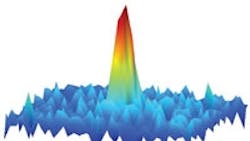Ultracold molecules hold promise for new materials
For the first time ever, physicists at JILA, Boulder, Colo., have observed chemical reactions near absolute zero, demonstrating that chemistry is possible at ultralow temperatures and that reaction rates can be controlled using quantum mechanics, the strange rules of submicroscopic physics. The new results and techniques will help engineers and scientists understand previously unknown aspects of how molecules interact, a key to advancing biology, creating new materials, producing energy, and other research areas. The work also will aid studies of quantum gases (where particles behave like waves) and exotic physics spanning the quantum and macroscopic worlds.
Ultracold molecules are a hot research area because they may offer more insights and applications than ultracold atoms, which scientists have manipulated for more than 20 years. Researchers have long known how to control the internal states of molecules, such as their rotational and vibrational energy levels. But until now, they have been unable to observe direct consequences of quantum mechanical motions of whole molecules on the chemical reaction process. Creating simple molecules and chilling them almost to a standstill makes this possible by presenting a simpler environment that can reveal previously unobserved chemical phenomena.
By precisely controlling the molecules' internal states — electronic energy levels, vibrations, rotations, and nuclear spin — while also controlling the molecular motions at the quantum level, scientists can study how the molecules scatter or interact with each other quantum mechanically. In JILA's ultracold experiments, quantum mechanics reigns and the molecules spread out as rippling waves instead of acting as barbell-like solid particles. They do not collide in the conventional sense. Rather, as their quantum mechanical wave properties overlap, the molecules sense each other from as much as 100 times farther apart than would be expected under ordinary conditions. At this distance, molecules either scatter from one another or, if quantum conditions are right, swap atoms. Scientists expect to be able to control interactions by creating molecules with specific internal states and “tuning” their reaction energies with electric and magnetic fields. The JILA research is supported by NIST, the National Science Foundation, and the Department of Energy. For more information, visit www.nist.gov.
